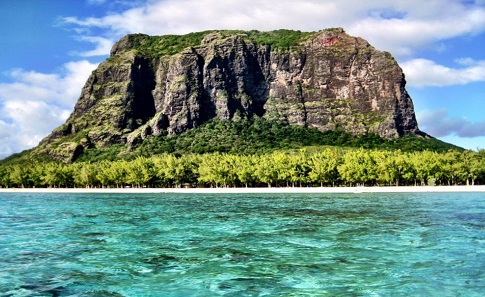
Mauritian peninsula where slaves jumped to their deaths to escape slavery

Lying at the extreme southwestern tip of the Indian Ocean island of Mauritius on the windward side of the island is a UNESCO World Heritage site that holds high importance to the island, and is a symbol of the country’s sacrifices.
Le Morne Brabant is highlighted by an eponymous basaltic monolith with a summit 556 metres (1,824 ft) above sea level. The summit covers an area of over 12 hectares (30 acres).
There are many caves and overhangs on the steep slopes of the peninsula.
Slaves that sought refuge here were protected by the mountain’s isolated, wooded and almost inaccessible cliffs.
Le Morne Brabant is largely surrounded by a lagoon and is a well-known tourist attraction. It is also a refuge for two rare plants, the Mandrinette and the Boucle d’Oreille.
The peninsula was notorious in the early 19th century as a refuge for runaway slaves.
Many slaves that had run away from their masters climbed to the tip of the peninsula then jumped to their deaths for not wanting to continue laboring for their masters under the pathetic conditions they were put through.
Legend also has it that after the abolition of slavery in Mauritius, a police expedition traveled there on 1 February 1835 to inform the slaves that they had been freed. The purpose of the expedition was however misunderstood by the very many slaves, who leapt to their deaths from the rock.
UNESCO listed Le Morne Brabant as a World Heritage Site in 2008, and to date, the peninsula is held in high regard by the island’s citizens.






